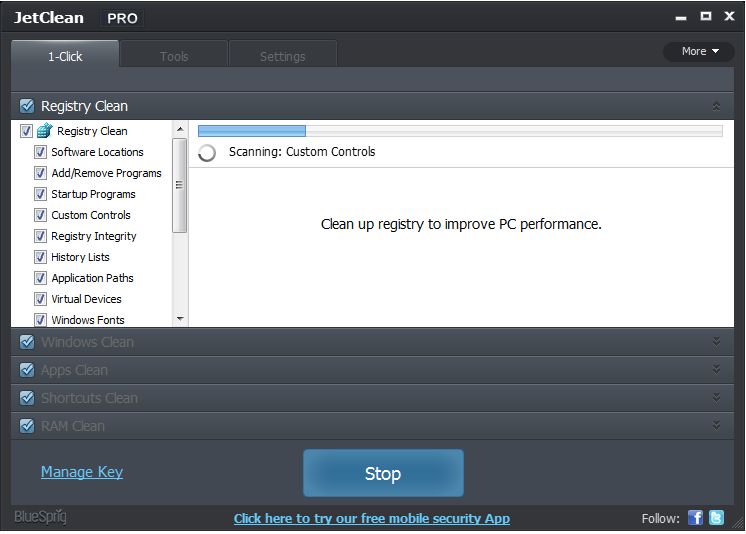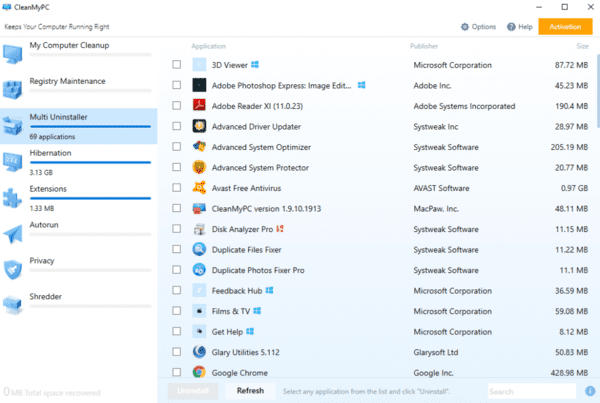
- #BEST DESKTOP CLEANER FOR WINDOWS 7 HOW TO#
- #BEST DESKTOP CLEANER FOR WINDOWS 7 INSTALL#
- #BEST DESKTOP CLEANER FOR WINDOWS 7 SOFTWARE#
- #BEST DESKTOP CLEANER FOR WINDOWS 7 PC#
- #BEST DESKTOP CLEANER FOR WINDOWS 7 ISO#
After a force-reset, it took about 40 minutes to get to my desktop, and my desktop freeze after a few additional minutes.
#BEST DESKTOP CLEANER FOR WINDOWS 7 PC#
Instead of something good, my PC couldn't boot up. (I thought it's some good stuff, since Lifehacker featured it.)

In Windows 7, I have installed a "Lion Theme", which I've seen in an article from Lifehacker. Seriously, that thing really improved since XP.
#BEST DESKTOP CLEANER FOR WINDOWS 7 INSTALL#
If you often install and remove stuff, because you just want to try something out, System Restore is your friend (you can even give it some more gigabyte of space if you can spare, that is). (seriously, it shows everything you would ever want to know about a process, and more) It shows all information about all the running processes. You're best off with Process Explorer for this.
#BEST DESKTOP CLEANER FOR WINDOWS 7 SOFTWARE#
You might also want to try and find whether there's any software slowing your PC down. Especially if you're using an SSD, wear can become noticeable in a relatively short time. If you're an advanced user, you might be better off with Autoruns.Īlso consider that your hardware itself might have become slower over time. If your boot is becoming slower, use Soluto.
#BEST DESKTOP CLEANER FOR WINDOWS 7 ISO#
This is handy to find large files that are left behind (some iso for a VM, for example).ĭo some scans for other malware (you only mention viruses). It also gives a graphical representation of the used space. This will create an overview of all the files on your hard drive. It will also automatically create a restore point, should you accidentally delete important files. You choose which of these to actually delete. This will find all files and registry entries associated with the uninstalled program.
#BEST DESKTOP CLEANER FOR WINDOWS 7 HOW TO#
Would anyone have any recommendations on how to better clean my computer in the future from random junk, settings, etc. So, I guess in conclusion, are there any more steps that I could take my clean my computer more effectively in the computer? I know there are different versions of programs such as CCleaner, and there are uninstallers besides the Windows one, but I don't know if those actually make much of a difference. Lastly, on top of cleaning, I have also disabled all of my startup processes besides the vital ones that I need to run my computer.

I know that it isn't possible to reverse every action that installing or deleting a program causes, but I have a feeling that I can reverse more of these effects and speed up my computer. I have been expecting this, so over the past months I have regularly 'cleaned' my computer - removing programs, defragging, CCleaner, and virus scans. Anyways, over the past six months (how long this version has been installed) I have noticed an obvious decline in my computer's performance. I frequently install, uninstall, modify, break, or otherwise alter various programs on my computer (experimentation is fun!). When you’re finished with a project or task, move the associated files to another folder like your main Documents or Photos folder-or even dump them in a folder on your desktop.I am currently running Windows 7 圆4. To keep the desktop useful for this task and prevent it from getting too cluttered, try only storing files on your desktop for as long as you need them. For example, you might store spreadsheets you’re working on, documents you’ve scanned, photos you’ve just taken, or things you’ve just downloaded on your desktop.

The desktop works well as a workspace, giving you a convenient place to store files with which you’re working currently. Use the Desktop as a Temporary Working Area You can then move items back onto your desktop as you need them.

If you’d like to clean up your desktop quickly, you can select everything on your desktop and then drag and drop them into a folder. And yes, you can drag and drop program shortcuts into folders, too. You can double-click a folder on your desktop to open it, so it takes a few more clicks to open your files-but they’re still easy to find.įor example, you could have separate folders for your photos and documents, or keep files related to a single project in their own folder. Drag and drop items from your desktop into the folder. To create a folder, right-click the desktop, select New > Folder, and give the folder a name. Organize Your Files and Shortcuts Into FoldersĬonsider using folders to keep your desktop organized.


 0 kommentar(er)
0 kommentar(er)
